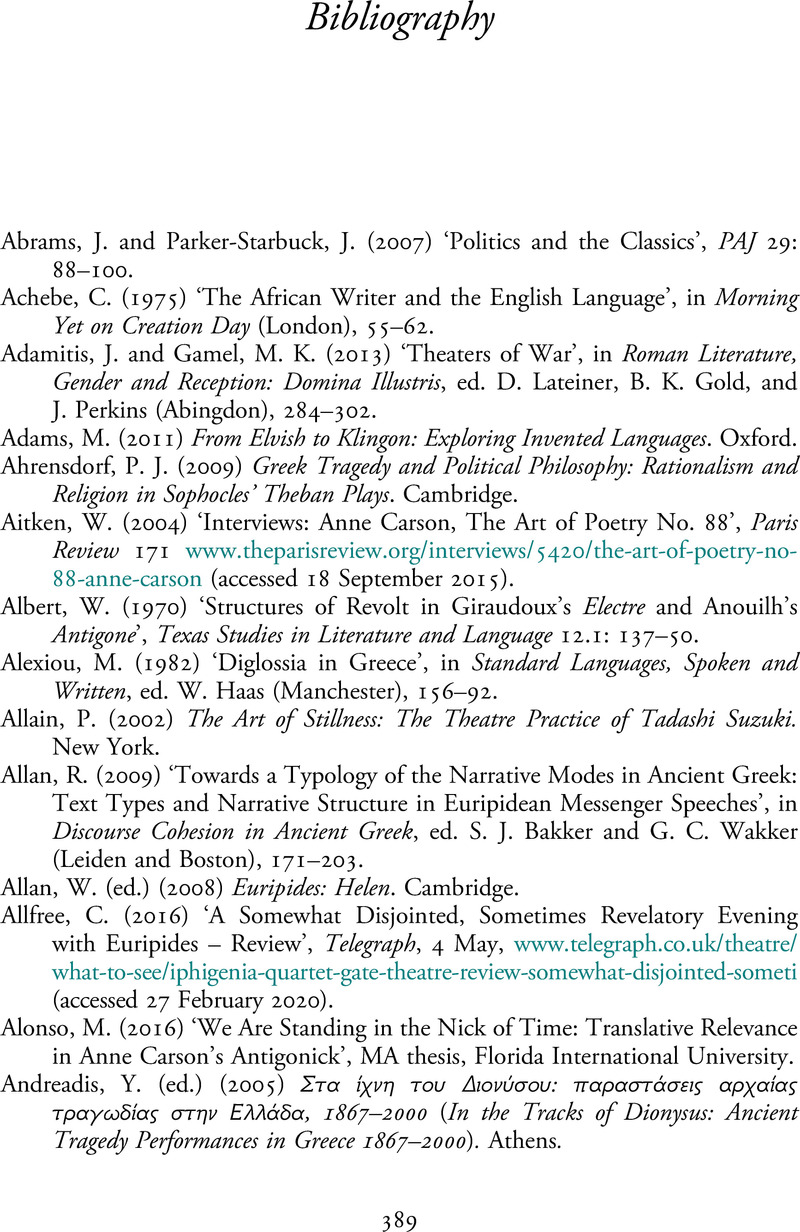Bibliography
Published online by Cambridge University Press: 12 March 2021
Summary

- Type
- Chapter
- Information
- Adapting Greek TragedyContemporary Contexts for Ancient Texts, pp. 389 - 425Publisher: Cambridge University PressPrint publication year: 2021



